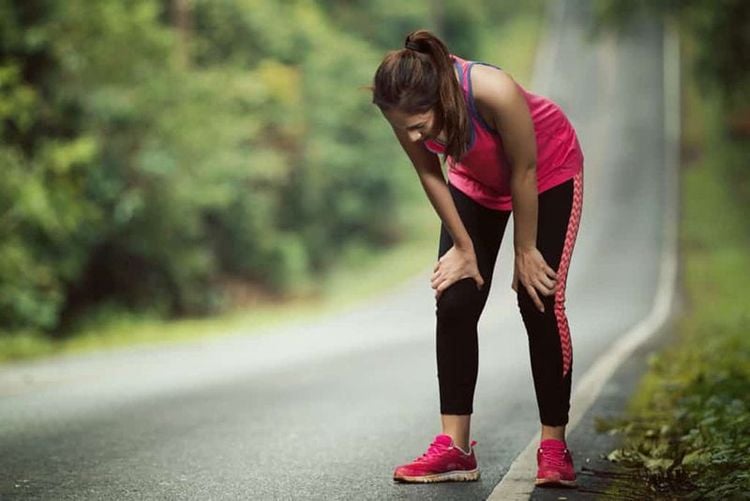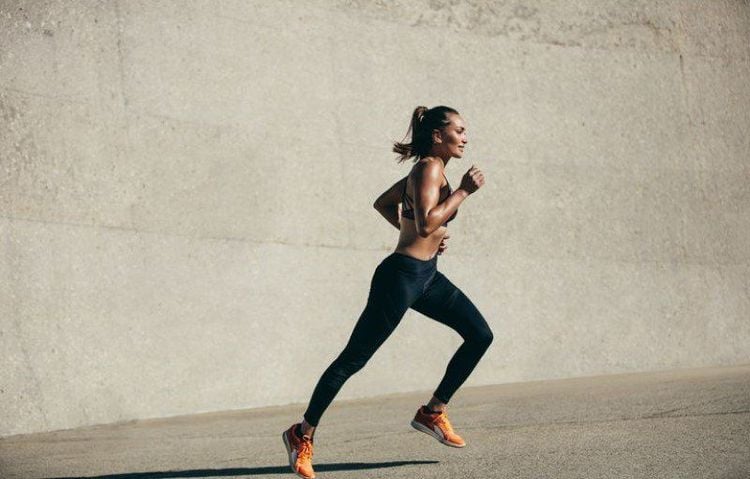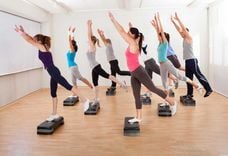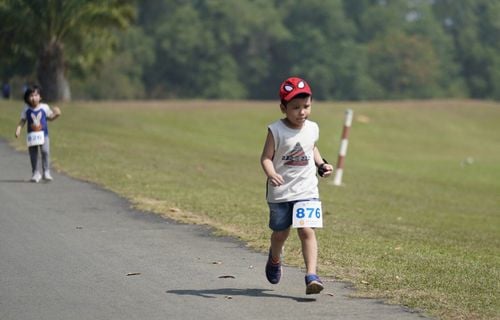This is an automatically translated article.
Breathing is one of the most important techniques when running. Proper breathing helps us not to feel tired or difficult when running, while helping to prolong running distance and improve endurance.1. Why is it difficult to breathe while running?
Strenuous activities like running make our muscles and respiratory system work harder than usual. The body needs more oxygen and has to get rid of the build-up of carbon dioxide (CO2) that makes it harder to breathe.
Breath quality can be an indicator of fitness level or how well the body responds to running speed and intensity. If we try to run too hard, we may experience shortness of breath, wheezing or chest tightness.
2. Breathe while jogging through your nose or mouth?
When jogging at a slower pace than usual, we can use the method of breathing through the nose. Or choose to inhale through your nose and exhale through your mouth.
Inhaling and exhaling through the mouth allows more oxygen to enter the body and fuel the muscles. In addition, breathing through the mouth will reduce tightness in the jaw, helping to relax the face and body.

Hít thở là một trong những kỹ thuật quan trọng nhất khi chạy bộ
3. Tips to breathe properly when jogging
Use these simple and effective ways to breathe easier and more efficiently while running. When trying a new technique, start slowly so your body can feel it before picking up the pace.
3.1. Belly breathing Deep belly breathing strengthens the muscles that support breathing and allows us to take in more air. In addition to being able to use oxygen more efficiently, belly breathing also reduces hip jolts when running.
Belly breathing is especially important if we have a habit of shallow breathing. Breathing through the chest also causes the shoulders to stretch, so it can be seen that the body relaxes more naturally than when breathing through the belly. We should use belly breathing in daily life.
How to Breathe:
Feel the breath with your belly while lying on your back. Inhale through the nose, filling the abdominal cavity with air. As the stomach expands, push the diaphragm down and out. Lengthen your exhales so that they are longer when you inhale. Do this a few times and each 5 minutes long over a period of several days. Maintain a slow pace when you first incorporate this breathing pattern into your run. After getting used to it, we can increase the speed.
3.2. Breathing exercises Spend time focusing only on the breath, this helps to increase lung function and capacity while developing breath awareness.
Discover the exercises that work best and create your own routine using one or more of the following breathing techniques:
Alternating breathing (nadi shodhana): inhale through one nostril and exhale through the other. Equal breathing: breathing out and inhaling time is the same for each breath Diaphragm breathing pursed lips

Khi chạy bộ hãy làm quen với những bài tập thở đơn giản
3.3. Focus on Posture To breathe properly and feel comfortable while running, maintain the correct body posture to support healthy and efficient breathing. Maintain good posture and head in line with the spine, making sure that the head is not tilted back or forward.
Relax your shoulders, avoid stooping or leaning forward.
3.4. Rhythmic Breathing Rhythmic breathing allows the body to absorb more oxygen and relieves stress. To avoid muscle imbalance, alternately exhale when your right foot and left foot touch the ground. Breathing rhythmically allows the body to put less pressure on the diaphragm and equalize the pressure exerted on the sides of the body.
Follow the 3:2 pattern, allowing the body to alternate which leg is affected on the exhale. Inhale for three foot beats and exhale for the next two. If we are running at a faster speed, we can use the 2:1.
If running in a certain pattern is too troublesome, we just need to pay attention to our breathing to know what rhythm is most comfortable.
3.5. Breathe in fresh air Breathing becomes much easier if we are in clean air. If you intend to run outdoors in an urban area with polluted air, choose a time of day when traffic is at its lowest. Avoid busy roads and choose less congested ones.

Chạy và tập thở đúng nhịp sẽ mang đến hiệu quả tốt cho sức khỏe
4. Breathe properly when jogging with people with asthma
Exercise is important for patients with asthma whether exercise relieves or increases symptoms. With the right approach, people can improve lung function and manage their symptoms. Here are some tips for runners with asthma.
4.1. Jogging in good weather Certain types of weather can trigger asthma symptoms. On bad weather days, you can choose to run indoors. Cold air contains less moisture, making it hard to breathe and possibly causing symptoms.
In case of running in cold weather, cover your mouth and nose with a scarf to humidify and warm the air when you inhale. Other risk factors include changes in weather, hot days, and thunderstorms.
4.2. Be careful when you start and end your run Warm-up is especially important for people with asthma, because the lungs take longer to warm up. Slowly increase the intensity so that the lungs can adapt better. After the run is almost done, relax so that your lungs gradually move to a resting state.
4.3. Avoid pollen Avoid locations with a lot of pollen or jog during times when the air contains the least pollen, usually in the morning or after it rains. Maybe consider wearing a pollen mask. After your run, shower and wash your workout clothes.
4.4. Breathing Techniques Several breathing techniques are recommended for people with asthma. These exercises make breathing more stable and efficient, which in turn benefits running.
Try a few different techniques to see which helps control symptoms and provides the most benefit. Techniques include:
Nose breathing Papworth breathing exercise: inhale through the nose or mouth and exhale through the nose on a count of 1-4 Buteyko method: breathe normally for about 30 seconds and focus on breathing ; Use 2 fingers to gently close your nose and close your mouth, hold your breath until you can't hold it any longer. Breathe deeply with your diaphragm. Breathing is an important technique, so not only when jogging, but when practicing any sport. In any exercise or sport, you also need to pay attention to the correct breathing technique.
Please dial HOTLINE for more information or register for an appointment HERE. Download MyVinmec app to make appointments faster and to manage your bookings easily.
Reference source: healthline.com












